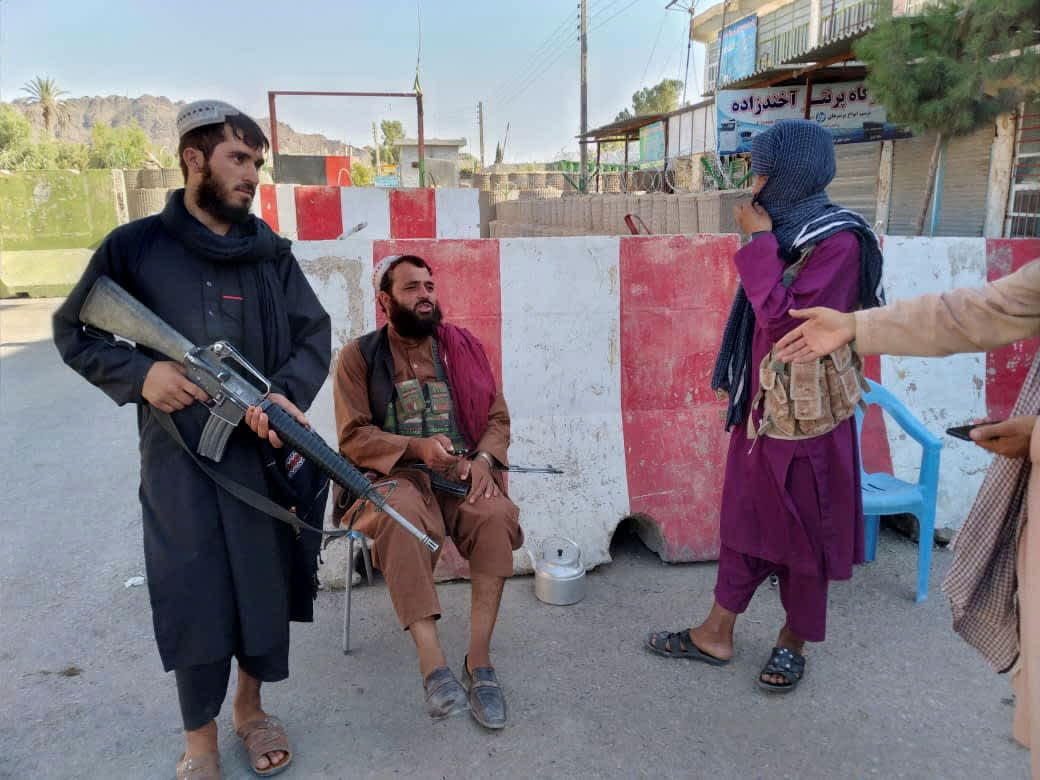WASHINGTON – The Biden administration will deploy 3,000 troops to Afghanistan in order to facilitate the drawdown of personnel at the U.S. Embassy in Kabul as the Taliban rapidly advances toward the Afghan capital.
The troops, which will consist of three infantry battalions in total from the Marines and Army, will deploy to Kabul’s Hamid Karzai International Airport within 24 to 48 hours, Pentagon spokesman John Kirby said during a press briefing Thursday.
“This is a very narrowly focused mission of safeguarding the orderly reduction of civilian personnel out of Afghanistan,” Kirby said, adding the Pentagon expects to increase its airlift capability in the region.
Additionally, a U.S. infantry brigade will be positioned in Kuwait in the event it is needed in Afghanistan to help secure the airport.
Meanwhile, a joint unit from the Army and Air Force, consisting of 1,000 personnel, will deploy to Qatar to help process special immigrant visas for Afghan nationals who assisted U.S. and NATO troops during the war.
Kirby said that despite the temporary influx of troops into Afghanistan, the U.S. expects to fully withdraw all troops by Aug. 31.
The U.S. Embassy in Kabul urged Americans again on Thursday to leave Afghanistan immediately, warning that its ability to assist citizens is “extremely limited” due to deteriorating security conditions and reduced staffing.
“In light of the evolving security situation, we expect to draw down to a core diplomatic presence in Afghanistan,” State Department spokesman Ned Price said Thursday.
Price added that Secretary of State Antony Blinken and Defense Secretary Lloyd Austin spoke with Afghan President Ashraf Ghani as well as NATO partners about the new troop movement earlier on Thursday.
Since President Joe Biden‘s April decision to withdraw U.S. troops from Afghanistan, the Taliban have made stunning battlefield advances with now nearly two-thirds of the nation under their control.
The militants captured the strategic city of Ghazni on Thursday, bringing their front line within 95 miles of Kabul, a staggering development that comes nearly two weeks before U.S. and NATO coalition forces exit.
The Taliban also claims to have captured Kandahar and Herat, Afghanistan’s second- and third-largest cities. Afghan officials confirmed Thursday evening that the Taliban captured Kandahar, the 12th provincial capital out of 34 to fall to insurgents, according to a report by The Associated Press.
Despite being vastly outnumbered by the Afghan military, the Taliban seized three provincial Afghan capitals as well as a local army headquarters in Kunduz on Wednesday, according to AP.
Wednesday’s gains came on the heels of a dramatic weekend blitz where the group took five provincial Afghan capitals.
The Pentagon has previously said that the continued Taliban offensive across the war-torn country runs against a commitment made last year by the group to engage in peace talks with the Afghan government.
“What we’re seeing on the ground is that the Taliban continues to advance and to assume control of district and provincial centers that clearly indicates that they believe it is possible to gain governance through force, through brutality, through violence, through oppression, which is at great odds with their previously stated goal of actually wanting to participate in a negotiated political solution,” Kirby told reporters Wednesday.
He added that while the Pentagon is concerned to see such advances by the Taliban, the Afghan military must now leverage the nearly two decades of training from U.S. and NATO coalition forces.
“They have the advantage in numbers, in operational structure, in air forces and in modern weaponry and it’s really about having the will and the leadership to use those advantages to their own benefit,” Kirby said.
“The recipe can’t be just a constant U.S. presence in Afghanistan that never ends,” he added.
At the White House on Tuesday, Biden told reporters that he does not regret his decision to withdraw American troops from Afghanistan, despite shocking gains by the Taliban.
“Look, we spent over a trillion dollars over 20 years, we trained and equipped with modern equipment over 300,000 Afghan forces,” Biden said.
“Afghan leaders have to come together,” the president added. “They’ve got to fight for themselves, fight for their nation.”
— CNBC’s Spencer Kimball contributed to this report from New York.
